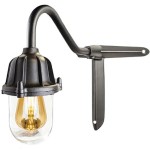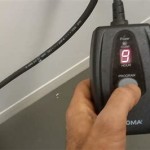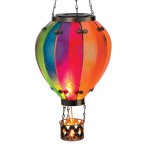Vista Outdoor Lighting Transformer Troubleshooting
A malfunctioning outdoor lighting transformer can be a frustrating issue, leaving your landscape shrouded in darkness. Troubleshooting the problem effectively requires a systematic approach and an understanding of the transformer's components. This article provides a comprehensive guide to troubleshooting Vista outdoor lighting transformers, empowering homeowners to diagnose and potentially resolve common issues.
Safety Precautions
Before commencing any troubleshooting, prioritizing safety is crucial. Electricity poses inherent risks, and taking appropriate precautions is essential to prevent injury.
- Always disconnect the power supply to the transformer at the breaker box before handling any wiring or components.
- Wear appropriate safety gear, including insulated gloves and eye protection.
- If uncomfortable working with electricity, consult a qualified electrician.
Understanding the Transformer
The transformer reduces standard household voltage (120V) to a lower voltage (typically 12V) suitable for landscape lighting. Familiarizing oneself with the transformer's key components aids in effective troubleshooting. Common components include:
- Input Terminals: Connect to the household power supply.
- Output Terminals: Connect to the low-voltage lighting circuit.
- Fuse: Protects the transformer and lighting system from overloads.
- Timer: Controls the on/off cycles of the lighting system (if applicable).
No Power to the Lights
If your landscape lights are completely off, several potential causes exist. The following steps provide a logical troubleshooting sequence:
- Check the Breaker: Ensure the circuit breaker supplying power to the transformer hasn't tripped. Reset the breaker if necessary.
- Inspect the Fuse: Locate the fuse (often accessible via a small panel on the transformer) and check for a blown fuse. Replace a blown fuse with a compatible replacement of the same amperage.
- Test the Input Voltage: Using a multimeter, verify that voltage is present at the transformer's input terminals. If no voltage is present, the issue lies with the household wiring and requires the attention of a qualified electrician.
- Test the Output Voltage: If input voltage is present but no output voltage is detected, the transformer itself is likely faulty and needs replacement.
Dim or Flickering Lights
Dim or flickering lights often indicate a problem with the wiring, the bulbs themselves, or an overloaded circuit. Consider the following troubleshooting steps:
- Check the Bulbs: Test the bulbs by replacing them with known working bulbs. If the problem persists, the issue lies elsewhere.
- Inspect the Wiring: Look for damaged or corroded wiring, especially at connections. Repair or replace damaged sections of wire and ensure secure connections.
- Verify Proper Wattage: Calculate the total wattage of all connected lights. Ensure it doesn't exceed the transformer's maximum wattage rating. An overloaded circuit can cause dimming or flickering.
Timer Issues
If the lighting system operates on a timer, problems with the timer can disrupt the lighting schedule. Troubleshoot as follows:
- Check Timer Settings: Ensure the timer is programmed correctly and the current time is accurate.
- Bypass the Timer: Temporarily bypass the timer to determine if it's the source of the problem. If the lights function correctly when the timer is bypassed, the timer likely needs replacing.
- Check Photocell (if applicable): Some timers incorporate photocells, which automatically turn the lights on at dusk and off at dawn. Ensure the photocell isn't obstructed and is functioning correctly.
Transformer Overheating
An excessively hot transformer can indicate a serious issue and requires prompt attention. Overheating can be caused by overloading, internal faults, or inadequate ventilation. The following steps address transformer overheating.
- Reduce the Load: If the transformer is overloaded (total wattage of lights exceeds the transformer's rating), remove some lights or replace the transformer with a higher capacity unit.
- Ensure Proper Ventilation: Ensure the transformer is installed in a well-ventilated location, free from obstructions that could impede airflow.
- Replace the Transformer: If the transformer continues to overheat despite addressing load and ventilation issues, the unit is likely faulty and requires replacement.
Intermittent Operation
Lights that work intermittently suggest a loose connection, a faulty component, or a problem with the wiring. Consider these troubleshooting steps:
- Check Connections: Tighten all connections at the transformer, along the wiring, and at the light fixtures.
- Inspect the Wiring: Look for damaged, corroded, or pinched wires, especially in areas where the wiring might be subject to movement or stress. Repair or replace any damaged wiring.
- Consider Environmental Factors: Moisture or water intrusion can cause intermittent problems. Inspect the wiring and connections for signs of water damage. Seal any potential entry points for water.

Landscape Lights Not Working Solutions To 7 Common Problems

Outdoor Landscape Light Troubleshooting Guide Abulous Lighting

Vista Outdoor Lighting Mt 600rp Series Transformer Atlantic

Installation Instructions Vista Professional Outdoor Lighting

Vista Low Voltage Lighting Transformer Review Sprinklersupply Com

Vista Outdoor Lighting Cts 300 Series Watt Transform Big Frog Supply

Vista Outdoor Lighting Tcs 150 Wifi Transformer 150w Atlantic
Vista Transformer For Outdoor Landscape Lighting 150w Dual Tap

Tsrpt150 150w Multi Tap Low Voltage Transformer Photocell Timer Kings Outdoor Lighting

Landscape Lighting Replace A Transformer







